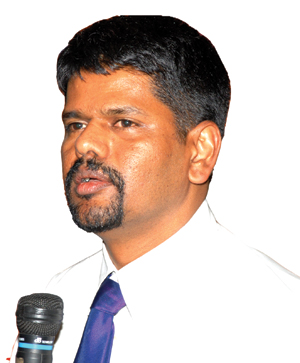Cutting down on waste and variation means costs will also drop. Explains....Pradeep Kumar E T, Country Manager - Operational Excellence, Tyco Electronics Corporation India Pvt Ltd.
Excerpts from his talk...
 |
He says that first of all we must learn to see waste and variation. He defines waste as anything that does not add value to the production process while variation is anything that deviates from the plan. Simply put Mr. Kumar's policy is that cutting down on waste and variation means costs will also drop. He identified 8 main wastes - Over-production , Waiting ,Transportation, Processing, Inventories ,Motion, Defective Products and Unused Creativity . |
Having said that he said, the losses the company incurs can be seen by looking into:
- Balance Sheets
- Cash Flow
- Variance Reports
- Quality Reports
- Customer Responses
- Value Stream Maps
The losses can be seen in terms of productivity, material variances, margin losses, customer defects, material scrap, obsolete inventory, accounts receivable, excess inventory, poor cycle time, poor man- machine ratio and many more.
| It is important to review the numbers, conduct site walks and identify improvement activities. |
Value Stream Maps gives a page picture of the flow of information and material in the plant and the losses and defects. Typically a Future state map is created by working on the gaps in the current state maps. He drove home the concept of looking at waste and variation by several case studies and video clippings; including the projects he had worked in India and overseas. The Sushi bar video was an excellent example of using FIFO ( First In First Out) and controlling inventory.
He also brought in the concept of "window of waste" and how error proofing or inspection at source is important, rather that the down stream process or customer identifying defects, thereby causing great loss in all the value add on the products.
All fronts of the economy from hospitals to manufacturing and services industries are experiencing cost pressures, and Mr. Kumar, addressed how Six Sigma and Lean principles may be used to effect cost reductions. He stated that the combination of Six Sigma and Lean is a Powerful Union.
Primarily the customer's voice must be heard in terms of quality and quantity needed. This cuts down immensely on wastes like under-utilization of capacity.
Variation, i.e. Deviations from the planned production processes, must be stabilized. In effect, major reductions are seen in costs of rejection. .
A hospital working with Six Sigma cost cutting methods saw a fall in the time for the admission process by 45 minutes, resulting in a drop in labour costs and increased productivity.
So looking at the losses and probably capturing most of the wastes on the current state value stream, how does one go about bridging the gaps? Pradeep suggest that it is important to review the numbers, conduct site walks and identify improvement activities. Some of the suggested improvement activities are in the form of
- Kaizen Events- rapid Focused Improvement Activity
- Small Group Activities
- Six Sigma Projects
- Re-engineering
Pradeep discussed in brief the various tools that can be used during these initiatives and mentioned that they can be broadly classified under "Six Sigma and Lean". Some of the tools he discussed are :
- Work Place Organization- 5S
- Standard Work
- Visual Management
- Total Productive Maintenance
- Mistake Proofing
- Quick Changeover
- Six Sigma Techniques
- Pull System
- Kanbans
- Cell Design
- Low Cost Automation
- Lean Techniques to improve line balance and flow
Finally Mr. Pradeep spoke a little on risk management. By constructing a system for risk management, early identification of sources of risk could help cutting costs. Using tools such as FMEA risk can be seen and planned for, in effect preventing those risks from taking on larger cost dimensions.
A fall in costs may not be seen as an immediate consequence to the execution of Six Sigma and Lean policies.
Pradeep Kumar has worked in Projects, Production, Quality Assurance and Operational Excellence function. He is a Tyco Certified MBB in Six Sigma and Lean. Works as Country Manger- Operational Excellence with US based Tyco Electronics which is a 14 billion dollar company. Prior to Tyco Electronics he worked with IFB Industries and MICO. Pradeep is also Six Sigma / Lean leader responsible for Lean Implementation and support in India, Europe and China. Pradeep has mentored close to 200 Green Belts and Black Belts and support's Tyco's Six Sigma training globally.
He was speaking at a Panel discussion organised by Businessgyan and TASMAC on the topic "Reducing The Cost of Operations"
Compiled by consulting Correspondent, Sushant Chari for Businessgyan

